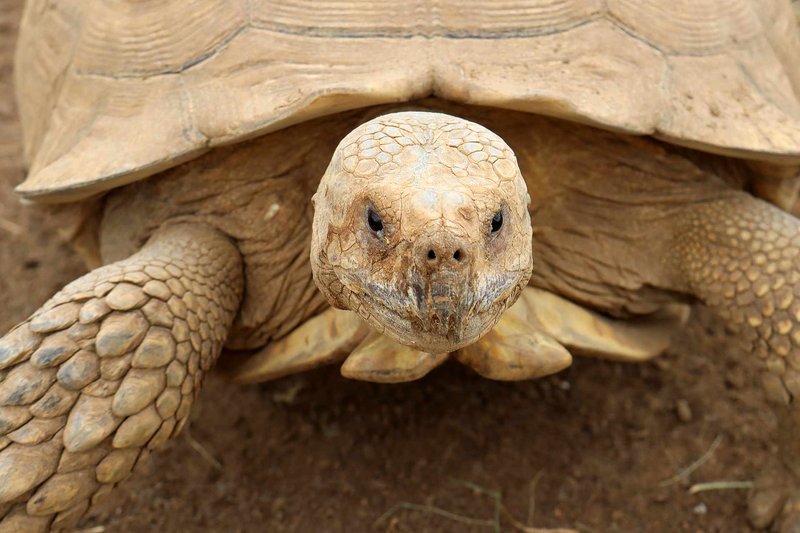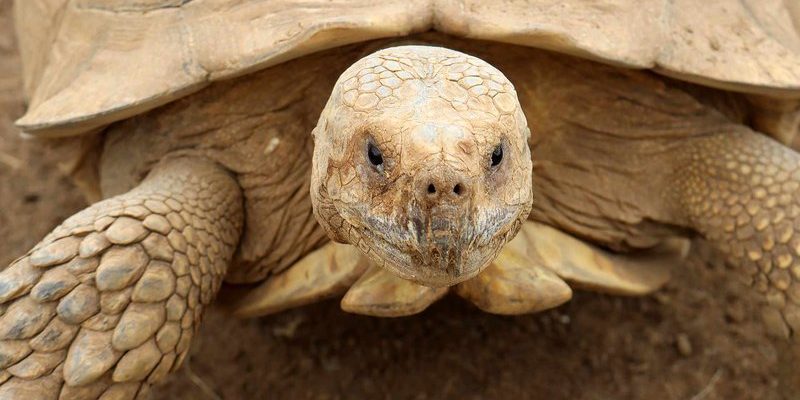
Sulcata tortoises, known for their impressive size and resilient nature, have unique personalities that can affect their relationships. So, let me paint a picture of what you can expect when it comes to these gentle giants and their social skills.
Understanding the Sulcata Tortoise
Sulcata tortoises, also called African spurred tortoises, are one of the largest species of tortoise in the world, reaching weights of up to 100 pounds or more. They’re native to the dry regions of Africa and can live for over 50 years in captivity if cared for properly. These tortoises have a shy demeanor and a slow pace, which sometimes leads people to think they’re not very engaging. But here’s the thing: they do have personalities!
It’s important to recognize that while sulcata tortoises are generally gentle, they’re more comfortable at a distance. They usually take their time warming up to humans and other pets, much like a tortoise peeking out from its shell. This can lead to a misunderstanding about their friendliness—just because they aren’t jumping into your lap doesn’t mean they’re unfriendly.
Are Sulcata Tortoises Friendly with Humans?
When it comes to humans, sulcata tortoises can form bonds, but it takes time and patience. They might seem uninterested at first, slowly wandering around their space and checking things out. Over time, they can become accustomed to your presence, enjoying your company in a relaxed way. Let’s look at how you can foster a friendly relationship.
- Consistency is Key: Regular handling and interactions can help your sulcata feel comfortable with you. Start slowly; let them get used to your presence first before picking them up.
- Treats Work Wonders: Just like kids, sulcata tortoises respond well to treats. Offering them leafy greens or their favorite snacks can encourage them to associate you with positive experiences.
- Respect Their Space: While you want to connect with your tortoise, it’s essential to avoid overwhelming them. Give them plenty of space to retreat when they want to, which helps build trust.
Over time, many sulcata tortoises develop a sense of familiarity and comfort with their owners. It’s a relationship that grows, like a plant you nurture with sunlight and water.
Can Sulcata Tortoises Coexist with Other Pets?
Now, let’s address the big question: how do sulcata tortoises get along with other pets? This can be a bit tricky. While sulcatas are generally peaceful, their interactions depend on the personalities of both the tortoise and the other animals involved.
If you have dogs or cats, introducing them to your sulcata requires caution. Usually, sulcatas have a non-aggressive nature, but here’s what you might want to keep in mind:
- Monitor Interactions: When introducing your sulcata to other pets, do it gradually. Keep an eye on their behavior to ensure everyone is safe.
- Size Matters: Larger dogs may not understand that a tortoise is not a toy. It’s best to keep these interactions supervised to prevent any accidents.
- Separate Spaces: Giving each pet its own space is crucial. A sulcata needs a secure, tortoise-friendly environment where it can roam without the stress of other animals.
Ultimately, while sulcata tortoises can coexist with various pets, success depends on taking the right approach.
Understanding Their Body Language
To truly appreciate the sulcata tortoise’s temperament, you need to decode its body language. Just like humans, tortoises express how they feel through their actions. Here are some signs to watch for:
- Hiding: If your sulcata retreats into its shell or hides behind an object, it might be feeling scared or insecure.
- Calm Behavior: If your tortoise is slowly walking around and not hiding, it likely feels content in its environment.
- Head Extensions: A sulcata that extends its head out of its shell is usually curious—this is a good sign of openness!
Understanding these signs can help you gauge how your sulcata feels and inform how to interact with it.
Tips for Creating a Pet-Friendly Environment
Creating a nurturing environment for your sulcata can significantly enhance its ability to interact with other pets. Here are a few tips:
- Proper Housing: Ensure your tortoise has a spacious enclosure with room to roam. A well-designed habitat will help reduce stress and encourage exploration.
- Temperature Control: Sulcata tortoises thrive in warm environments. Make sure their habitat mimics their natural habitat with the right temperature and humidity.
- Safe Plants and Decor: Use non-toxic plants and decorations in the habitat to avoid any potential hazards for your tortoise.
A well-thought-out living space can make all the difference in how your sulcata tortoise interacts with you and your other pets.
Final Thoughts on Sulcata Tortoises and Their Friendliness
In conclusion, sulcata tortoises can indeed be friendly with humans and other pets, but it all depends on how you approach the relationship. It requires patience, respect for their nature, and a thoughtful environment. These tortoises can be wonderful companions if you’re willing to invest the time to understand them.
Remember, every sulcata tortoise has its own personality—some might be more sociable than others. Take the time to observe, engage, and nurture your relationship, and you might just find that your sulcata tortoise can be a loving, friendly presence in your life. Enjoy the journey of learning and growing together!

